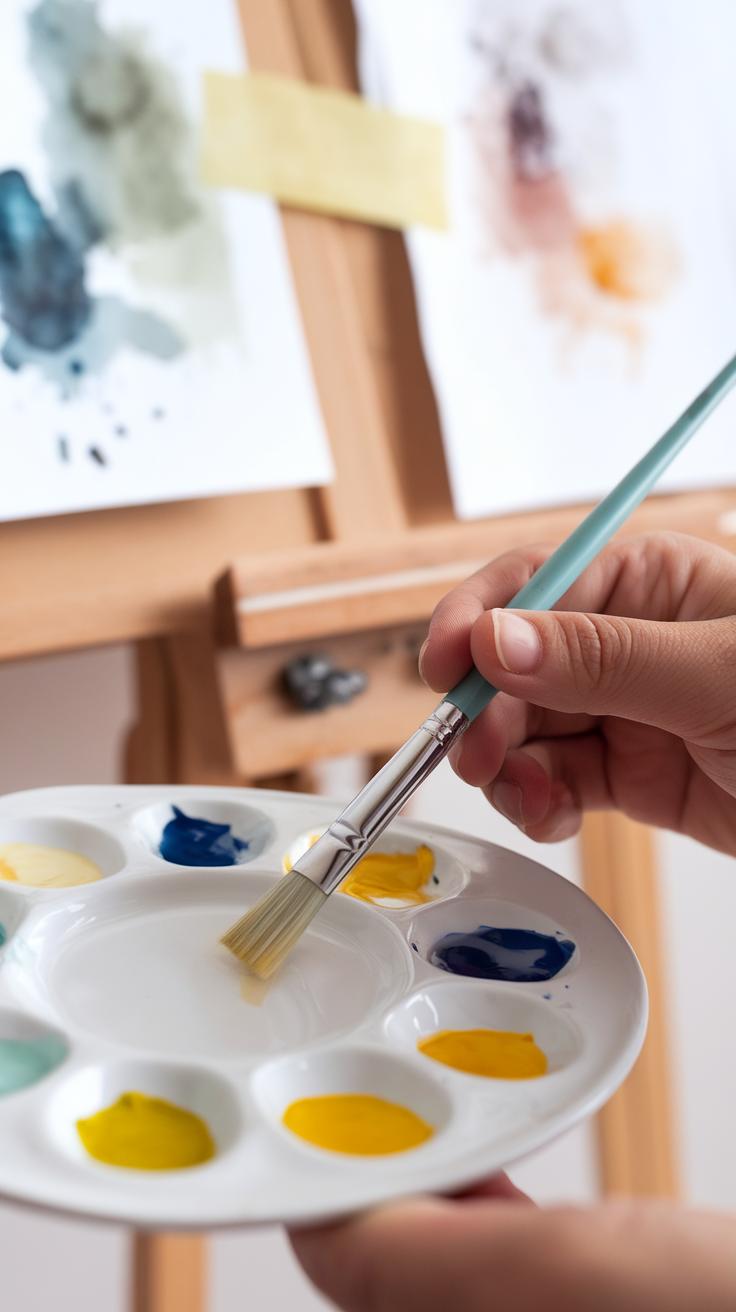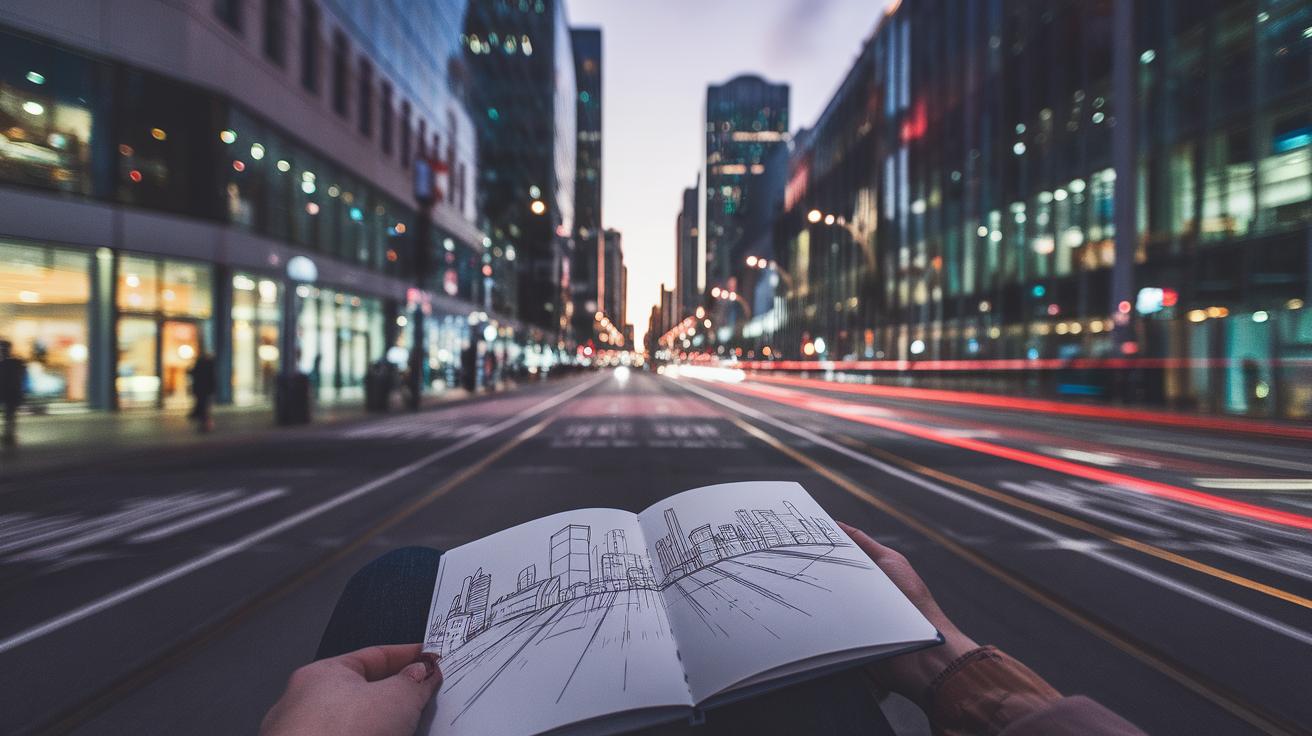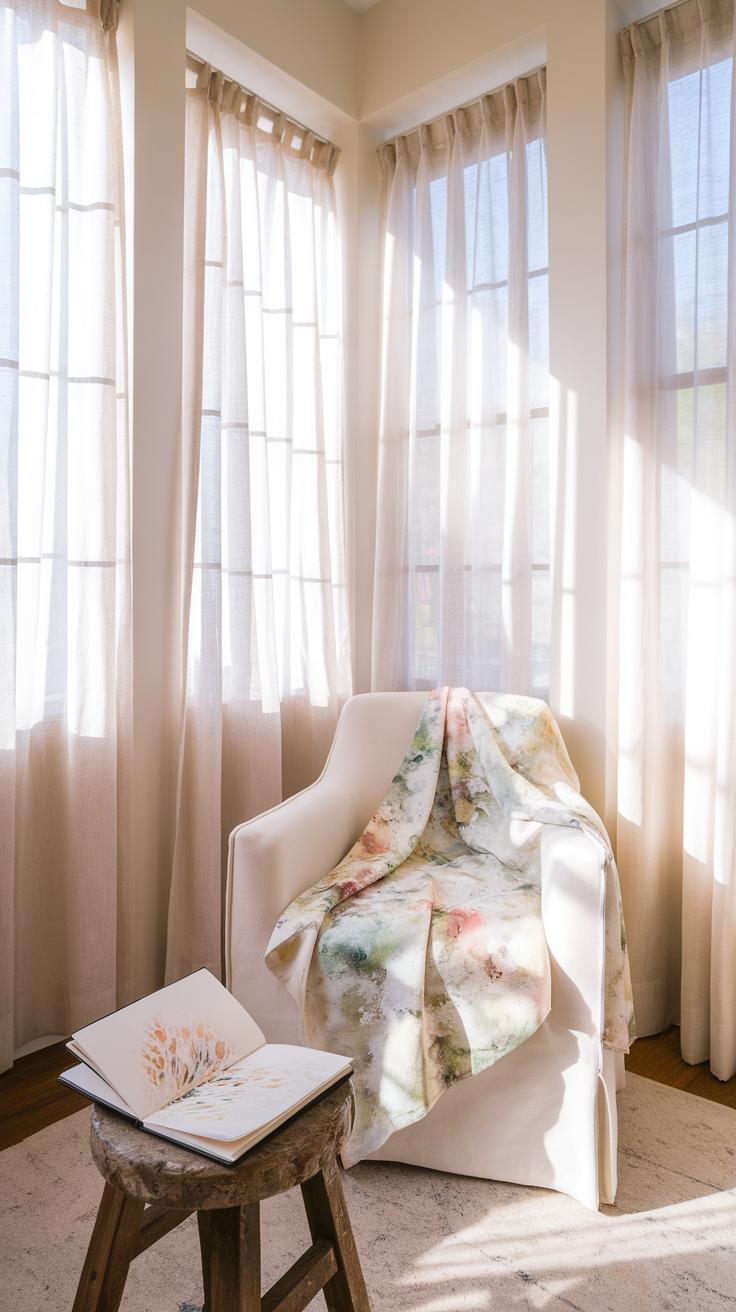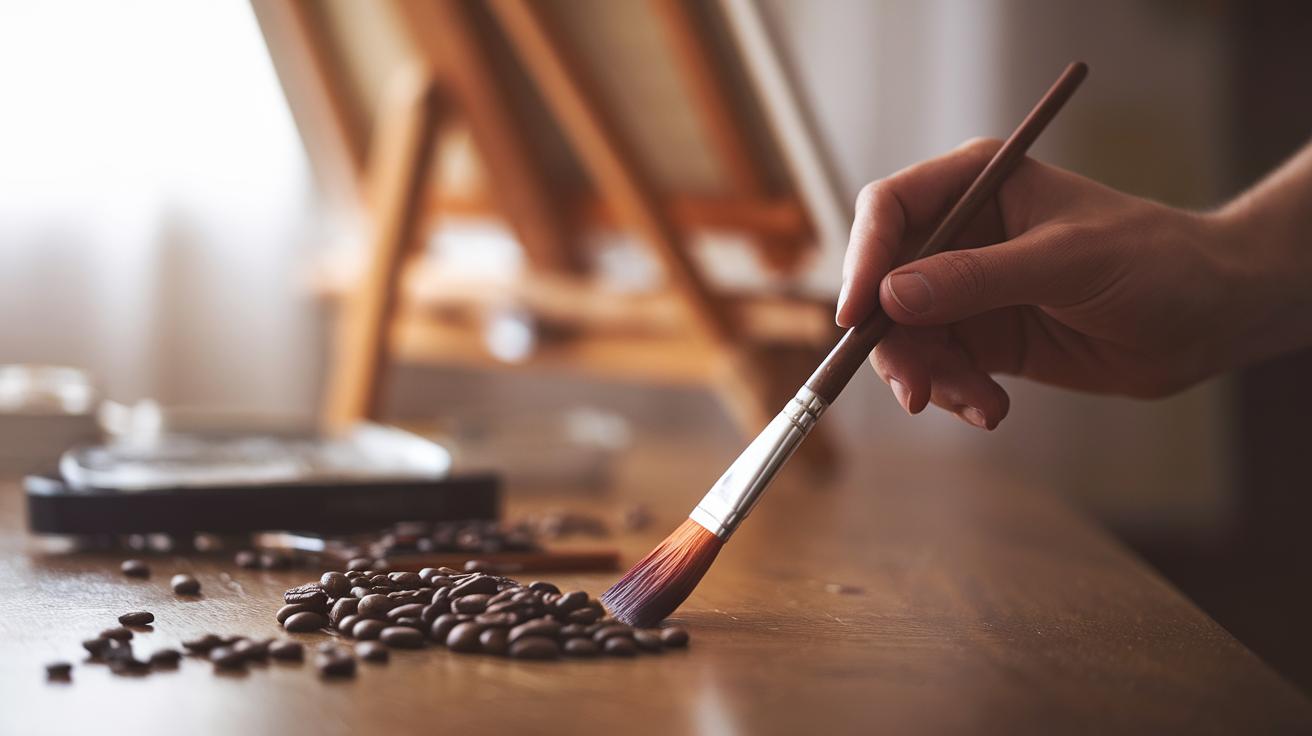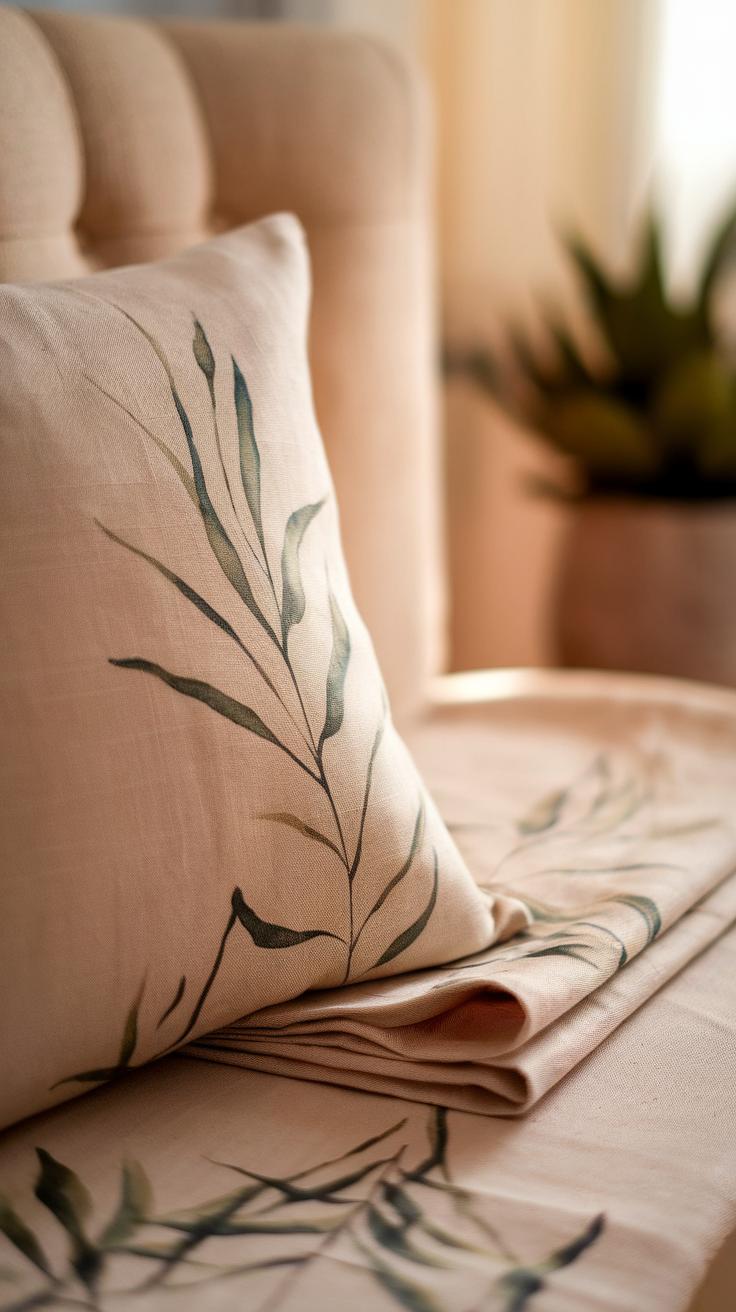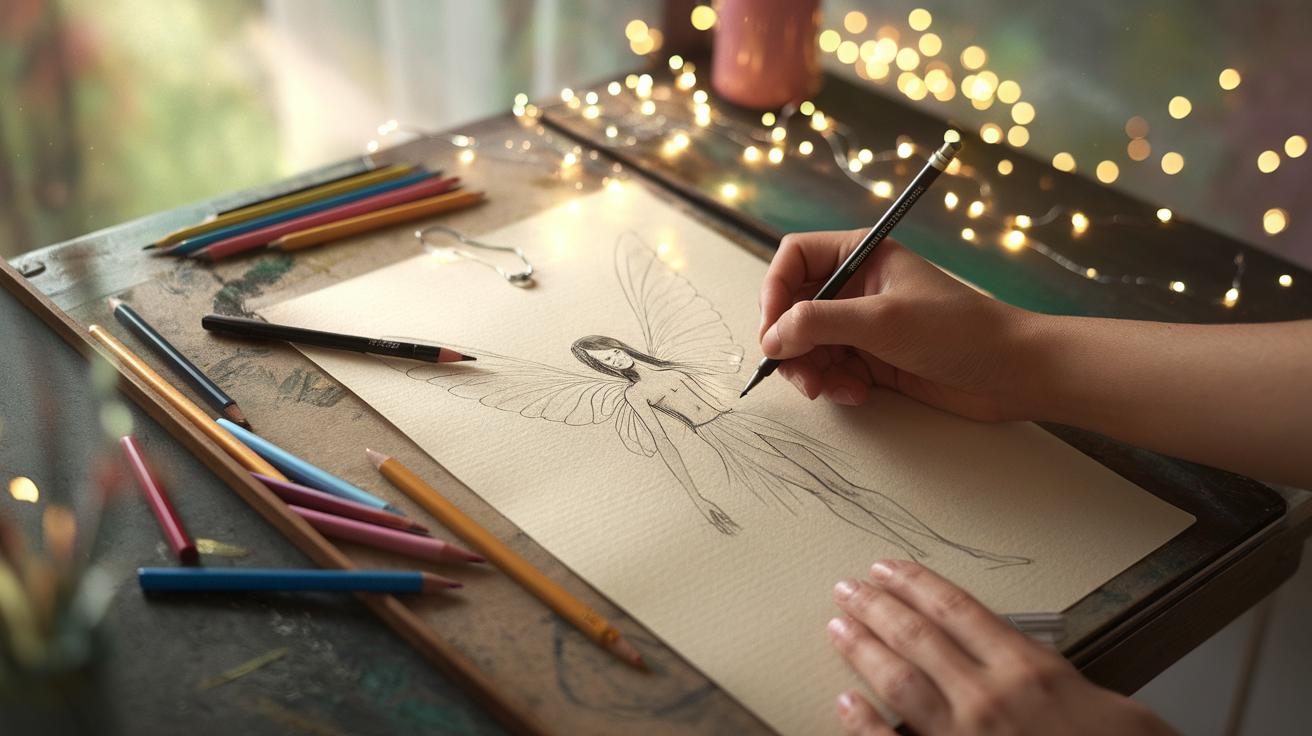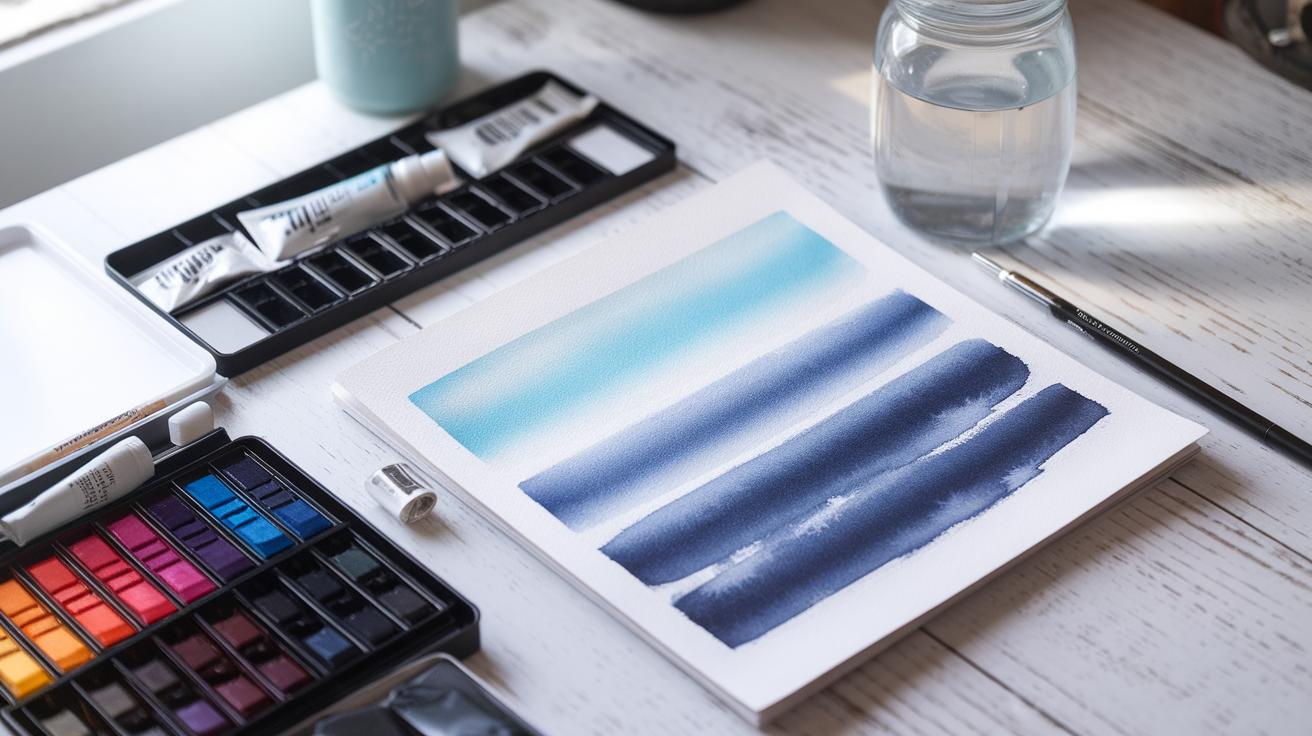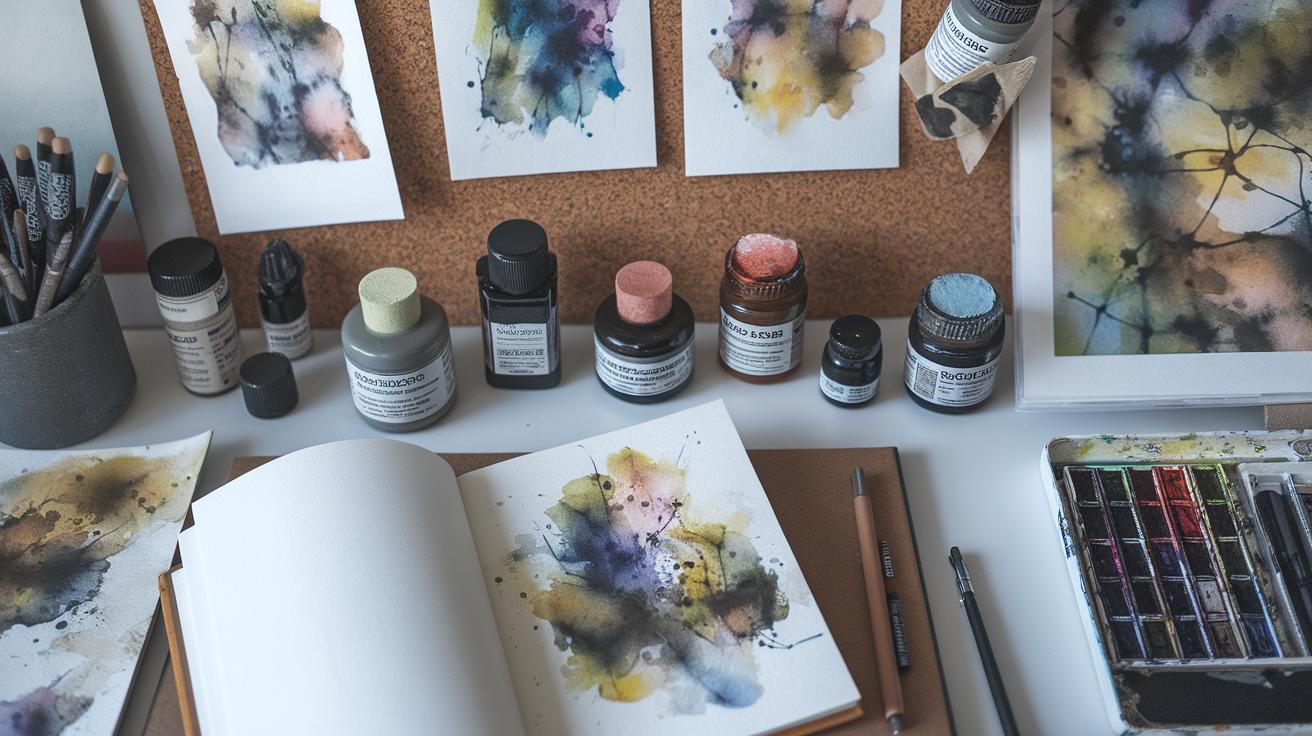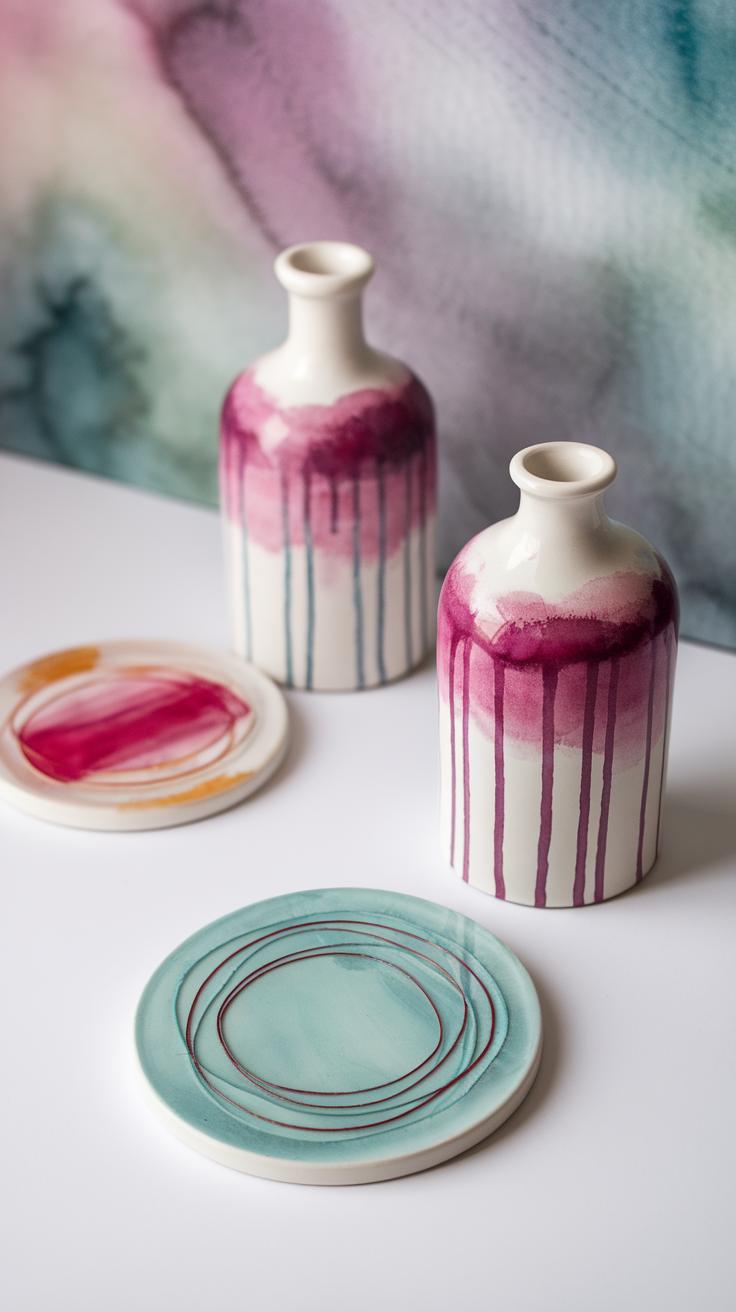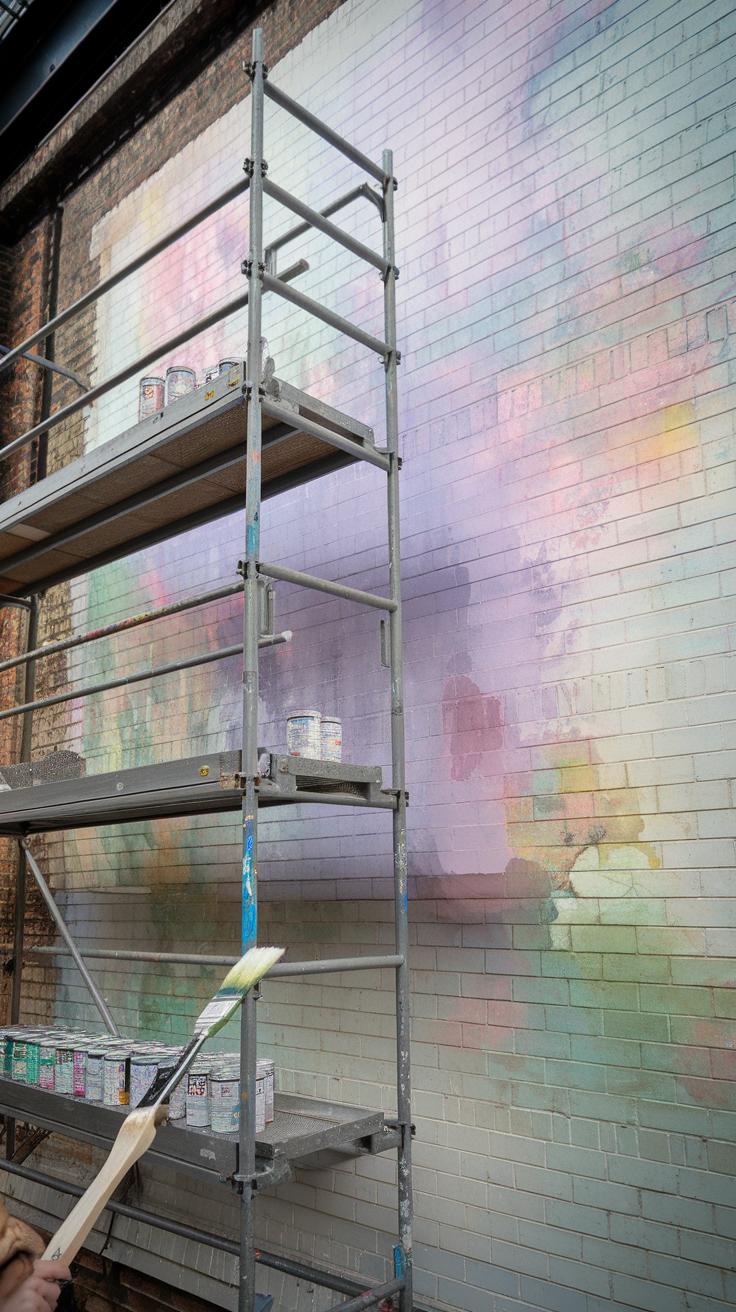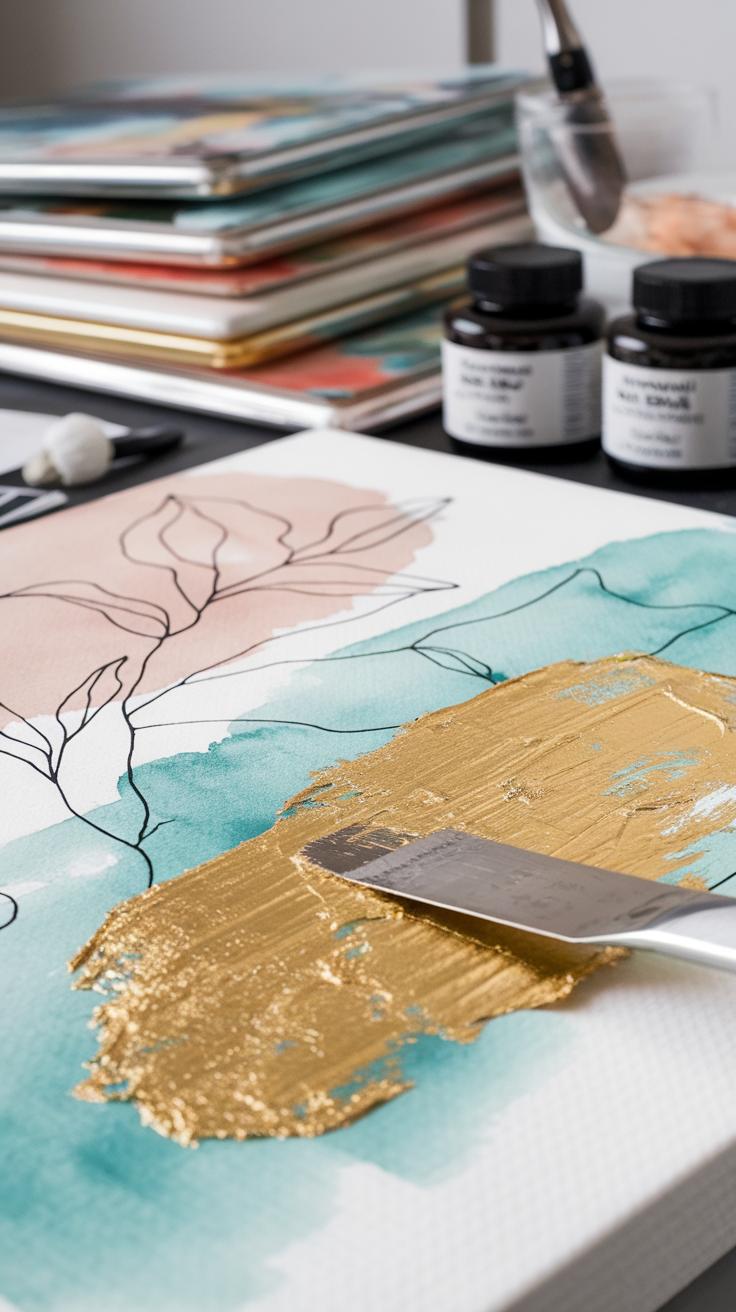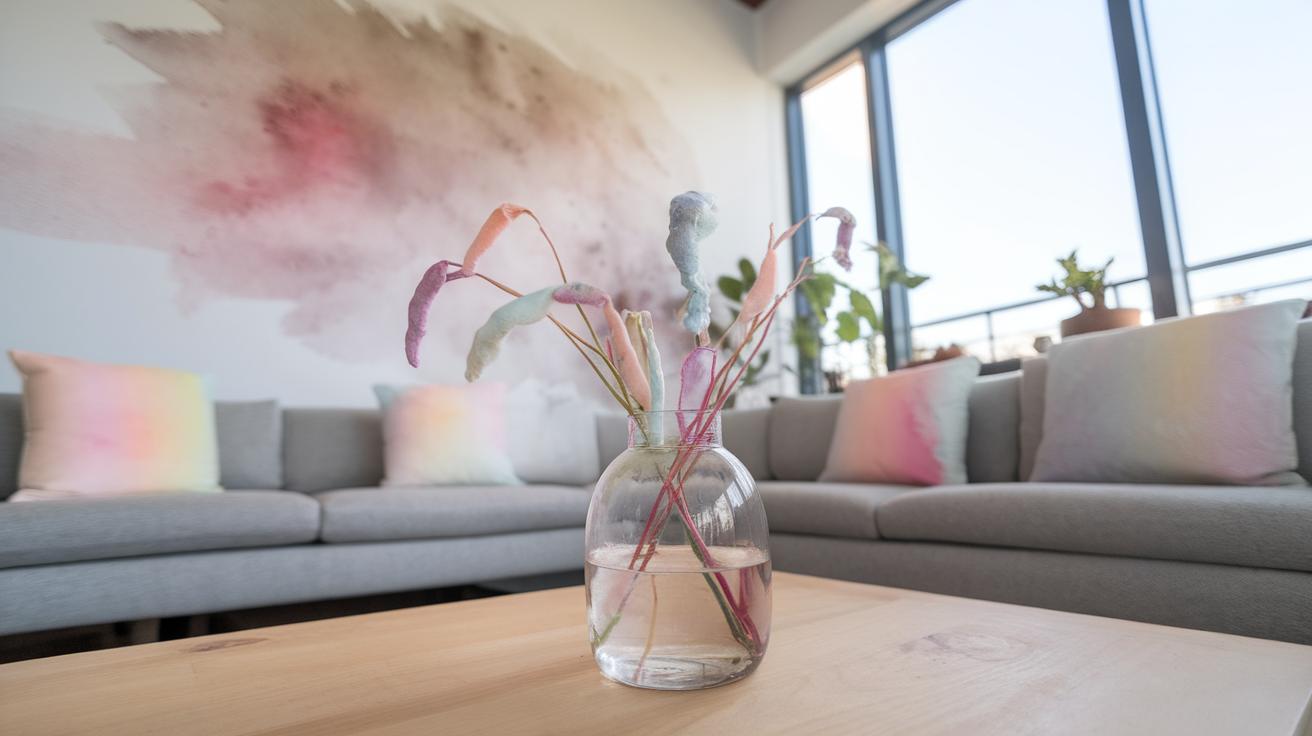
Unique Watercolor Ideas For Home Decor
Introduction
Watercolor painting offers a versatile and accessible medium to personalize your home decor. This art form uses pigments mixed with water to create soft, beautiful visuals on various surfaces. The glow and fluidity of watercolor paint bring life and unique character to any room. You do not have to be a professional artist to incorporate watercolor designs into your living space. Simple techniques and ideas can help you transform ordinary walls, fabrics, and accessories into eye-catching decor elements.
Using watercolor in home decor allows you to express your creativity while adding a gentle, artistic touch to your surroundings. From abstract wall art to hand-painted cushions, each piece can reflect your style and bring warmth to your home. This article guides you through fresh and distinctive watercolor ideas that brighten your space making it more inviting and original. You will find practical advice and inspiration to start your own watercolor home decor project.
Understanding Watercolor as an Artistic Medium
Watercolor painting uses pigments suspended in water to create artwork. The paint flows easily and blends on the paper, creating soft edges and smooth color transitions. Water interacts with the pigments to form effects that other paints cannot mimic. The transparency lets light pass through layers of paint, giving a glowing quality to the image.
Artists use special paper designed to handle water without tearing or buckling. This paper has a textured surface that holds pigment and water well. Brushes vary in size and shape but always offer control over water flow and paint placement. These materials work together to deliver the unique look of watercolor art.
The fluid, delicate nature of watercolor fits home decor projects perfectly. You can create art that feels airy, light, and calming. Its subtle colors and organic textures add interest without overwhelming a room. Can you imagine how a soft wash of blues or greens could change your living space?
The Basics of Watercolor Painting
Start with watercolor paper, which comes in different weights and textures. Heavier paper resists warping better. Rough textures grab more pigment, while smoother surfaces allow finer details. Choose brushes made for watercolor; natural hair or synthetic bristles work well. Round brushes suit detailed work, while flat brushes cover broad areas.
Watercolor pigments come as pans or tubes. Pans dry slowly and are portable, while tubes provide intense color. Mixing pigments with water controls the intensity and transparency. Try wet-on-wet to blend colors on paper or wet-on-dry for sharp lines.
Practicing simple techniques like layering, glazing, and lifting color lets you experiment with effects. Do you want to achieve a misty background or crisp shapes? These methods give you control over your vision. Having the right tools helps turn your ideas into reality.
Benefits of Watercolor for Home Decor
Watercolor art adds a sense of lightness to your decor, thanks to its translucent layers. This quality lets colors appear softer and more natural. The adaptability of watercolor means you can paint on paper, canvas, or even wood panels to suit your space.
Cleaning supplies and framing options for watercolor pieces are simple, making it easy to update your art when you want a change. Creating your own watercolor pieces allows you to match colors or themes in your room directly. This flexibility helps keep your decor fresh and personalized.
Watercolor also responds well to different lighting conditions. You might notice new details in sunny rooms or softer shadows in dimmer areas. How could you use these changes to highlight features in your home? Its ease of blending and layering colors can fit any style, from modern to rustic, making it a practical medium for home decoration.
Choosing the Right Space for Watercolor Decoration
Choosing where to place watercolor art in your home can shape the entire look and feel of a room. Look for areas that get enough natural or soft lighting to make colors stand out without fading quickly. Rooms with moderate traffic can protect delicate artwork from damage while still allowing it to be enjoyed.
You should think about each room’s purpose before adding watercolor decoration. For example, a calm bedroom might benefit from soothing blue or green washes, while a lively dining room could get energy from warmer hues. Consider how the shades and styles already in the space will interact with your watercolor piece.
Also, think about how visible the art will be. Placing watercolor near eye level draws attention. A distinct corner or accent wall can make your painting a focal point. Ask yourself, what mood do you want to create? Which areas deserve a fresh, artistic touch?
Selecting Walls and Surfaces
Picking the right wall or surface sets the stage for your watercolor artwork. Smooth surfaces work best for clear, vibrant washes since rough textures can interrupt brushstrokes. A medium or large wall offers space for expansive designs, while smaller spots suit delicate, detailed paintings.
Visibility matters. Choose areas that naturally catch the eye but won’t compete with heavy furniture or other decorations. Walls near seating or pathways ensure your art gets noticed daily. You might also consider less traditional surfaces like wooden panels or canvas-covered stretchers hung on a wall.
Test the surface by brushing water lightly before painting. It helps you see how the material absorbs moisture and if the color will spread as intended. Don’t overlook ceiling beams or built-in shelves for watercolor touches if they fit your style.
Watercolor in Different Rooms
Watercolor art can transform any room when matched to its use and style. Bedrooms benefit from soft palettes and gentle gradients to encourage relaxation. You might paint a peaceful landscape or abstract shapes in calm blues and purples.
In kitchens, consider bright, lively colors that brighten the space without overwhelming it. Small, framed watercolor botanical prints or tiles with simple patterns can add charm without clutter. Avoid overly detailed works where grime might gather.
Living rooms offer more freedom to experiment. Bold colors and larger compositions add energy, especially on feature walls. Think of floral or geometric designs that complement furniture and rugs. In playrooms or creative spaces, vivid watercolor murals can inspire imagination daily.
Have you identified which rooms in your home could use this fresh artistic touch? Which colors or themes will suit the mood you want for each space? Your choices make watercolor art not just decoration, but a part of your living experience.
Creating Watercolor Wall Art
Painting watercolor designs directly on your walls transforms your space in a personal way. Start by preparing the wall—clean it and apply a light coat of primer for smoothness. Choose high-quality watercolor paints designed for walls or mix acrylic mediums with watercolors for durability. Begin with a light sketch of your design using a pencil or painter’s tape for straight lines. Paint your design using soft, sweeping brushstrokes. Let each layer dry before adding details to avoid color blending. Use a spray bottle to add gentle water mist for soft edges or gradients. Consider themes like nature-inspired florals, abstract shapes, or soft clouds to fit your room’s mood. Adjust sizes and colors to match furniture and lighting. Creating your own watercolor wall art allows customization that enhances any living space uniquely.
Simple Patterns and Shapes for Beginners
For a beginner, start with easy patterns like blossoms, gentle waves, or simple geometric shapes such as circles and triangles. To paint blossoms, sketch rounded petals and fill them with soft washes of pinks or blues. Waves can be created by painting small curved lines in varying shades of blue, overlapping slightly. Geometric shapes work well with painter’s tape to keep edges crisp; paint shapes in light layers for depth. Practice blending colors while still wet to produce smooth transitions. These simple patterns emphasize repetition and balance, allowing you to get comfortable with watercolor’s fluidity before moving to complex designs. Constant practice of these shapes builds your confidence and skills for more detailed work.
Advanced Techniques for Unique Effects
Try gradients by starting with a strong color at one edge and gradually adding water to lighten the shade as you move along the surface. Layering adds richness by applying multiple washes after each layer dries, creating depth and texture. Splashes introduce randomness and energy; dip a brush in diluted paint and flick it to scatter droplets across the wall. Resist techniques like masking fluid can protect areas you want to keep white or clean from other colors. Combining these methods can create floral patterns with shadowed petals or abstract forms with vivid depth. How could these advanced effects change the feel of your room’s wall? Experimentation leads to unique art that makes your home truly one of a kind.
Watercolor on Fabrics for Home Decor
Watercolor painting on fabric adds a personal touch to cushions, curtains, and tablecloths in your home. You can create soft, flowing designs that bring a fresh look to everyday fabric items.
Before painting, you need to prepare the fabric properly. Wash it without fabric softener to remove any finishes that block paint absorption. Let the fabric dry completely and iron it flat to avoid wrinkles.
Use fabric paints mixed with watercolors or watercolor paints designed for textiles. These options hold color better and resist fading. Apply your design with brushes or sponges, working in thin layers to prevent the fabric from becoming stiff.
Once finished, heat-set the fabric by ironing it on the reverse side. This step locks in the paint, making your artwork stay vibrant through use and washing. Experiment on smaller fabric pieces first to perfect your technique before working on larger items.
Choosing Suitable Fabrics
Cotton and linen work best for watercolor painting. Their natural fibers absorb paint evenly and allow colors to blend smoothly. Canvas is another solid choice for durability and texture.
Polyester and synthetic fabrics do not hold watercolor well because the paint tends to bead and slide off. You can still try these with special fabric mediums mixed into the paint, but results vary.
Before painting, always wash and iron the fabric to remove sizing and wrinkles. This prepares the surface for better paint absorption and prevents uneven patches.
If you want to create a diffuse effect typical of watercolor art, choose lighter, plain fabrics in neutral colors. They help the watercolor tones appear vivid and translucent on the fabric.
Care and Maintenance of Painted Fabrics
To keep your watercolor fabric pieces looking fresh, wash them gently by hand or use a delicate cycle with cold water. Avoid harsh detergents, which can fade the colors.
Dry painted fabrics by laying them flat or hanging them away from direct sunlight. Heat from dryers or strong sun exposure can weaken the paint.
If wrinkles appear, iron the fabric on the reverse side at a low temperature. Also, avoid dry cleaning, as chemicals may damage watercolor paint.
Consider using fabric sealers after painting for extra protection. They help preserve colors through repeated washing and daily use, particularly for cushions and tablecloths.
Using Watercolor Designs on Decorative Accessories
Watercolor techniques offer a fresh way to update everyday objects in your home. Decorating vases, lampshades, and plant pots can add color and character to your living space. These projects require simple materials like watercolor paints, brushes, water, and a sealant to protect your designs.
Start with a clean, dry surface. Light washes of color work well and create soft, flowing patterns that suit many decor styles. If you’re new to painting, try abstract shapes or gentle gradients instead of intricate details. This keeps the process enjoyable and stress-free.
Consider using painter’s tape to outline areas for neat borders or layering colors to create depth. Once your paint dries, seal your work with a clear spray or varnish to keep it from fading or smudging. Have you thought about which accessory could benefit from a splash of watercolor in your room?
Painting on Ceramic or Glass
Ceramic and glass surfaces respond nicely to watercolor if you prepare them correctly. Begin by cleaning the item with rubbing alcohol to remove oils and dirt. This step helps the paint adhere better. Choose watercolor paints or watercolor pencils designed for non-porous surfaces.
When painting, apply light layers to avoid pooling and uneven patches. A soft brush helps control the flow. Let each layer dry completely before adding more. You can experiment with transparent effects that play with the smooth finish of glass or ceramic.
After painting, fix your design by baking the piece in an oven at low heat (usually 250°F) for about 30 minutes, if the material and paint instructions allow. This process helps make the colors more durable and water-resistant. Do you have a plain vase or dish that could be your next canvas?
Customizing Lampshades and Plant Pots
Lampshades and plant pots make perfect spots for watercolor art. With fabric lampshades, use watercolor pencils or diluted paints for soft, brushed designs. Keep the fabric stretched tight and paint gently to avoid wrinkles.
Plant pots, especially terracotta ones, absorb watercolor well. Apply several light coats, allowing each to dry before the next, to build colors without cracking. Simple patterns like dots, stripes, or leaf shapes give your pots a fresh look.
Finish your work with a protective spray suitable for indoor use. For lampshades, avoid heavy paint that blocks light; for pots, choose spray sealants that withstand moisture. How might your lampshade or favorite plant pot change with your personal watercolor touch?
Incorporating Watercolor Art into Wall Murals
Watercolor murals create a striking focal point in any room. To design a large watercolor wall, start by assessing the space. Consider how your mural will interact with lighting, furniture, and existing colors. Your goal is to create a piece that feels natural and balanced within your home.
Visualize your draft on paper before moving forward. This helps avoid costly mistakes on the wall. Scale your sketch proportionally, using grid lines or a projector. Think about the style that complements your room—whether abstract washes, botanical themes, or soft landscapes.
Keep your palette consistent with your interior tones. Too many colors can overwhelm the space. Instead, select 3 to 5 shades that echo your decor. What mood do you want to set with your mural? Soft pastels can calm, while bold hues can energize the room.
Planning Your Watercolor Mural
Start by mapping your wall’s dimensions. Use graph paper to sketch your design at scale. This step will guide your brush strokes and pigment placement. When choosing colors, consider the room’s light source and wall texture. Soothing blues often fit bedrooms, while warm yellows add cheer to kitchens.
Sketch your mural with basic shapes first. Refine details after you’re happy with the flow. Think about how your design connects with furniture and wall art. Will your mural wrap around corners or stop at edges? These choices will affect the overall look.
Ask yourself: Does this design enhance or clash with the room? Carefully selecting colors and motifs ensures your mural feels integrated, not out of place. Using a limited color palette helps maintain harmony throughout your space.
Techniques for Large-Scale Watercolor Painting
Using watercolor for large walls involves planning your paint application technique carefully. Work in sections to keep edges wet for smooth blending. Horizontal strokes can help create gradients, while vertical ones add texture and depth.
Layering is key. Start with light washes to set background tones. Let these dry completely before adding deeper layers. This method prevents colors from running and muddling. Use soft brushes for broad washes and smaller brushes for details.
Mix water and pigment thoughtfully to control opacity. More water gives a translucent effect, less water provides richer color. Test your blends on paper before applying to the wall. This experimentation prevents surprises and improves your confidence.
Mixing Watercolor with Other Art Forms
Combining watercolor with other media can bring new life to your home art projects. Using ink or pencil along with watercolor adds sharpness and depth to your designs. Ink can help create crisp outlines or intricate patterns that watercolor alone might not achieve. Pencil works well for soft shadows or subtle textures that support the colors without overpowering them.
Layering acrylic paint with watercolor introduces texture and boldness. Acrylic’s thickness contrasts with watercolor’s translucency, allowing you to build striking details and highlights. You might begin a piece with a smooth watercolor wash, then add small strokes or shapes with acrylic to emphasize parts of your artwork. This technique helps your art stand out, especially on walls or canvases used in your living space.
Think about which style fits your room—do you want fine details or bold textures? Experiment with combining these media to create pieces that reflect your personality and improve the atmosphere around your home.
Adding Ink and Pencil Details
Using ink or pencil on top of watercolor is a great way to add sharpness and fine details. After your watercolor dries, you can use a fine-tip pen or a soft pencil to draw lines, patterns, or shading. This approach works well for adding facial features in portraits, details in flowers, or handwritten text.
Ink enhances contrast by creating strong outlines that make your artwork pop against the soft watercolor background. Pencil helps blend shapes gently or add light shadows that watercolor alone can’t show clearly. Try mixing these techniques in sketchbooks or framed art for your home to practice layering.
Ask yourself what details you want to emphasize. How can subtle pencil shading balance bold ink lines? Adding these touches draws the eye and adds sophistication to your home decor art.
Combining Acrylics and Watercolor
Mixing acrylics with watercolor adds texture and weight to your art pieces. Watercolor spreads and blends easily, creating delicate backgrounds or washes. Once dry, applying acrylics over watercolor can introduce raised textures and intense colors that stand out.
Try layering thin acrylic strokes on top of watercolor for highlights or patterns. You can use acrylics to correct or enhance areas where watercolor may have faded or lacked vibrancy. This method brings depth and a tactile quality to your artwork, especially on large murals or canvas decor.
Consider how much texture you want in your painting. Would raised acrylic brush strokes or smooth watercolor areas better suit your living space? Experimenting with both lets you create unique art pieces that fit your home’s style and your creative vision.
Maintaining Your Watercolor Decor
Watercolor art demands careful upkeep to keep its beauty in your home. You can prolong its life by controlling the environment around it. Avoid placing watercolor pieces in direct sunlight because UV rays cause colors to fade. Try to keep the room’s humidity between 30% and 50% to prevent the paper or paint from warping or cracking.
Using UV-protective glass or acrylic frames helps shield your art on paper. For watercolor paintings on non-paper surfaces, applying a clear, non-yellowing sealant designed for watercolors preserves the colors and prevents moisture damage. You might ask, how often should you check these protections? It’s good to inspect every six months and replace or refresh if needed.
Cleaning is another important step. Dust your artworks gently with a soft brush or microfiber cloth. Avoid harsh chemicals or excessive moisture, which can damage paint layers. Taking these steps ensures your watercolor decor remains a vibrant feature of your living space. How will you make maintaining your pieces part of your regular routine?
Protecting Watercolor on Walls and Surfaces
Watercolor painted directly on walls or other home surfaces needs specific care. Sealing your artwork with a clear matte or satin varnish designed for indoor use offers protection against dirt and moisture. This layer acts like a barrier but won’t change the appearance of your watercolor.
Think about the placement of your wall art. Rooms with high humidity, like bathrooms or kitchens, pose risks to paint longevity. Using a dehumidifier or keeping a window open can lower moisture levels, preventing mold and peeling. Also, avoid walls that get strong sunlight, as colors will dull faster.
Keeping your walls clean without harming your watercolors means avoiding wet cleaning methods. Instead, dust the surface with a dry, soft cloth. Could you set a reminder to check environmental conditions regularly? That simple habit can save your art from damage.
Cleaning Painted Items Safely
Watercolor art on fabrics or objects requires gentle cleaning to keep colors bright. For watercolor-decorated textiles like pillows or curtains, spot clean with mild soap and water. Use a soft sponge to dab, never scrub. If the item is machine washable, choose cold water and the gentlest cycle to avoid fading.
For hard objects like ceramics or wood painted with watercolors, wipe lightly with a damp cloth. Avoid soaking these items or using harsh chemicals, which break down paint particles. Test cleaning in a hidden spot before applying widely.
Thinking about which cleaning method suits your decorated item best helps its lifespan. How do you plan to handle regular cleaning to avoid accidental damage? Small care routines will keep your watercolor decor vibrant and fresh in your home.
Inspiration and Ideas to Personalize Your Space
When creating watercolor art for your home, think about what feelings and stories you want your space to tell. Start by choosing simple prompts, such as painting scenes from your favorite place or capturing the colors of a memorable season. You could try mixing shapes and textures to create pieces that match your furniture’s style. If your couch is modern and sleek, go for bold, clean strokes in your watercolor. For rustic wood furniture, softer washes and natural tones can tie the look together.
Consider combining your watercolor art with textiles or throw pillows that pick up colors from your paintings. This adds layers and depth to your space. Ask yourself what mood you want: calm and peaceful, lively and bright, or cozy and warm. Use that to guide the tone of your watercolor designs. Personal touches such as initials or simple patterns can transform art into something uniquely yours. What stories do your walls currently tell, and how can your watercolor pieces add a new one?
Choosing Color Palettes for Your Home
Select watercolor palettes that blend well with your current home colors to create a balanced look. If your walls are neutral, consider soft pastels or muted earth tones in your art. These colors will add interest without overwhelming the room. For spaces painted in bold colors, use lighter shades or complementary colors in your watercolor to avoid clashing. You can try laying out your favorite paints on a palette and holding it against your furniture or curtains to see how they interact.
Think about the mood different colors create: blues and greens bring calm, while reds and yellows add energy. If you want versatility, choose palettes with a range of light and dark shades. This variety lets you create pieces that can work in different rooms or seasons. Do you prefer a cool or warm atmosphere? Your answer will guide your color choices and make sure your watercolor art fits seamlessly into your space.
Creating Themes and Artistic Narratives
Use watercolor art to tell a story or express your personality through themes that reflect what matters to you. You might choose a nature theme with leaves, flowers, or waves to bring the outdoors inside. Or select abstract shapes and lines to show movement and energy. Think about objects that connect to your hobbies or memories, such as boats if you love the water or cityscapes if you enjoy urban life.
Group paintings that share colors or subjects to make your walls feel like a gallery. This creates a narrative that visitors can follow as they move through your home. Ask yourself what story you want your space to tell each day. Would you prefer a peaceful retreat or a vibrant energy boost? Using watercolor to create a theme can turn everyday areas into spaces full of meaning and creativity.
Conclusions
Watercolor art provides many opportunities to customize and beautify your home. Its flexibility suits different decor styles and rooms, enabling you to create pieces that feel personal and alive. Whether you paint an accent wall, design pillow covers, or craft unique accessories, watercolor techniques let your creativity shine. You can achieve stunning effects with little experience by using simple tools and ideas from this guide.
Exploring watercolor for home decoration invites you to experiment and enjoy the process. Each brush stroke adds charm and originality to your space. This approach brings color, texture, and artistic flair into daily life. By embracing these watercolor ideas, you can make your home a reflection of your personality and taste, turning every corner into a warm, inspiring environment.


